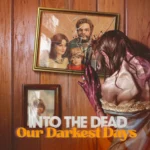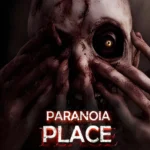In the vast, ever-expanding universe of Roblox experiences, where millions of user-generated creations vie for attention, some titles manage to break through the noise, capturing the collective imagination with a unique premise and addictive gameplay loop.
Dead Rails [Alpha], developed by RCM Games, is one such phenomenon. This cooperative survival adventure plunges players into a desolate, zombie-infested 1899 America, tasking them with journeying 80 kilometers by train towards a rumored vaccine in Mexico. It's a blend of Old West grit, resource management, frantic defense, and the distinctive charm of Roblox's emergent gameplay. Currently in its alpha stage, Dead Rails has rapidly surged in popularity, prompting both fervent praise for its innovative concept and constructive criticism regarding its unfinished state. This review will meticulously dissect what makes Dead Rails a standout, what challenges it faces as it speeds down the tracks of development, and its potential to become a definitive Roblox classic.
The Genesis of a Concept: From Inspiration to Alpha Launch (2022-2023)
RCM Games, led by developer RiccoMiller, is no stranger to the Roblox horror and survival genre, having garnered significant success with titles like "The Night Shift Experience" and "The Graveyard Experience." This prior experience undoubtedly laid the groundwork for their ambitious undertaking with Dead Rails. The concept likely stemmed from a desire to combine the popular "long drive" survival genre (as seen in games like "A Dusty Trip") with a more structured, cooperative, and mobile base-oriented approach.
The Spark of an Idea: A Train-Based Apocalypse
The core premise of a train serving as a moving base in a zombie apocalypse is instantly compelling. It provides a constant sense of progression, a mobile defensive stronghold, and a clear, linear objective. This unique twist on the survival genre immediately sets Dead Rails apart within Roblox. Early development likely focused on establishing the core mechanics: the physics of a moving train, rudimentary resource gathering, and basic zombie AI. The decision to set it in 1899 also injects a distinct aesthetic and technological limitation, shaping the types of weapons and tools available to players, adding a layer of historical fantasy to the horror.
The Alpha Release: Building in Public and Unexpected Success
Dead Rails launched its alpha version to the public, a common practice on Roblox allowing developers to gather early feedback and iterate rapidly. What RCM Games might not have anticipated was the sheer velocity of its popularity. The game quickly became a sensation, drawing in hundreds of thousands of concurrent players. This rapid ascent, while a testament to the game's core appeal, also meant that an "alpha" experience designed for smaller player counts was suddenly under the immense pressure of a massive, engaged community. This early, public development phase exposed the game to real-world stress testing, bugs, and a deluge of player expectations, fundamentally shaping its ongoing development.
Core Gameplay Loop: Survive, Scavenge, Fortify, and Drive
At its heart, Dead Rails offers a cooperative survival loop that is deceptively simple yet profoundly addictive. Players spawn aboard a train, equipped with basic tools, and must work together to survive an 80-kilometer journey through a hostile, undead-infested wasteland.
The Rhythms of Survival: Day and Night Cycles
Gameplay revolves around a dynamic day-night cycle. During the day, the landscape, though desolate, offers opportunities for
scavenging. Players can disembark the train at various points – ruined towns, abandoned houses, military outposts, or eerie castles – to search for vital resources: fuel for the train, ammunition for weapons, medical supplies, and sellable loot to earn cash. This exploration element encourages risk-taking and strategic planning. As night falls, the dangers amplify dramatically. More aggressive and specialized enemies, such as vampires and werewolves, emerge, making it treacherous to be outside the train. This forces players to return to their mobile fortress, shift focus to
defense, and brace for the onslaught.
Train Management and Fortification: Your Moving Fortress
The train itself is the lifeline and the central hub of operations. Players must constantly monitor its
fuel levels, ensuring it doesn't grind to a halt in the middle of a zombie horde. The train can also be
fortified using resources gathered during scavenging. Barricades, metal plating, barbed wire, and even mounted turrets can be constructed to bolster defenses against the relentless waves of zombies and other creatures. This fortification mechanic introduces a layer of tower defense strategy: Where do you place defenses? How do you balance protection with maintaining clear sightlines and movement? This mix of resource management and skill-based combat makes every encounter feel meaningful and emphasizes teamwork.
Classes and Progression: Specialization in the Apocalypse
Dead Rails moves beyond a generic survivor experience by incorporating a class system, allowing players to specialize in roles and contribute uniquely to the team's survival. This adds significant depth and replayability.
The Roster of Roles: Diversifying Team Play
Instead of a traditional leveling system, Dead Rails utilizes
class unlocks that provide distinct abilities and advantages. These classes include:
- Train Operator: Essential for keeping the train moving and navigating the treacherous tracks, often with unique driving benefits.
- Defenders (e.g., Ironclad, Arsonist): Focus on combat. The Ironclad boasts heavy armor and health, acting as a tank, while the Arsonist specializes in fire damage, excellent for crowd control.
- Scavengers (e.g., Miner, Packmaster): Optimized for resource gathering. A Packmaster might have increased inventory space, while a Miner could be more efficient at extracting valuable materials.
- Support (e.g., Doctor, Priest): Crucial for team longevity. The Doctor heals teammates and can revive fallen players, while a Priest might offer buffs or unique defensive abilities.
- Builders (e.g., The Alamo): Specializing in train fortifications, allowing for faster and more durable construction.
This diverse range of classes encourages teamwork and strategic composition. A well-balanced team with dedicated roles has a much higher chance of success than a group of uncoordinated individuals.
Unlocking and Mastering Classes: A Sense of Long-Term Goals
New classes are primarily unlocked through earning "Bonds," the game's premium currency, often obtained by completing challenges or via in-app purchases. This system provides a clear sense of progression and long-term goals for players. Mastering a class requires understanding its strengths and weaknesses, coordinating with teammates, and making the most of its unique abilities. This ongoing pursuit of new classes and improved strategies keeps players engaged and provides replayability, as different class combinations lead to vastly different gameplay experiences.
Graphics and Sound: Striking a Balance Between Simplicity and Atmosphere
Dead Rails operates within the inherent graphical limitations of the Roblox engine, yet it manages to craft a surprisingly effective atmosphere through its stylistic choices and sound design.
The Aesthetic of Desolation: Stylized but Effective Visuals
The game's visuals are characteristic of a well-made Roblox experience: stylized, blocky, but with a surprising amount of detail where it counts. The
post-apocalyptic desert landscape is vast and conveys a sense of desolation, with ruined buildings, skeletal trees, and sparse vegetation. Character models for zombies and other creatures, while simplistic, are instantly recognizable and appropriately menacing for the setting. The "alpha" status is evident in some areas, with textures that might feel rudimentary or environments that lack intricate detail. However, this often contributes to a nostalgic, "old Roblox" charm for many players, prioritizing clear gameplay elements over hyper-realism. The visual distinction between day and night, and the unique appearance of different enemy types, are well executed, ensuring readability during frantic encounters.
Auditory Immersion: From Creeping Dread to Frantic Combat
The sound design in Dead Rails is a significant contributor to its immersive and often tense atmosphere. The ambient sounds of the desert – the wind, the distant rumble of the train, the unsettling groans of unseen undead – create a pervasive sense of dread. As night falls, the soundscape shifts, becoming more intense with the ominous howls of werewolves or the disorienting whispers of vampires. During combat, the distinct sounds of various firearms, the splattering of zombie gore, and the creaking of the fortified train provide crucial auditory feedback. The soundtrack, where present, often leans into a suspenseful, Western-horror theme, effectively amplifying the tension. This well-crafted auditory experience compensates for any graphical simplicity, making the world feel tangible and dangerous.
Monetization Model: Bonds, Classes, and Fair Play
Dead Rails employs a straightforward monetization strategy typical of popular Roblox experiences, focusing on convenience, progression acceleration, and cosmetic enhancements rather than overt pay-to-win mechanics.
The Role of "Bonds": Currency of Progression and Revival
The primary premium currency in Dead Rails is "Bonds." Players can earn a limited number of Bonds through in-game achievements and daily challenges, but they can also be purchased with Robux (Roblox's virtual currency). Bonds are primarily used for:
- Unlocking New Classes: As detailed above, specialized classes are bought with Bonds, providing a direct pathway to expanded gameplay options.
- Revivals: If a player dies during a run, they can use Bonds to instantly revive, avoiding the frustration of starting over. This "pay-for-convenience" model is a key revenue driver.
- Cosmetics and Emotes: While not directly impacting gameplay, Bonds can also be used to acquire various cosmetic items for player avatars or unique emotes, allowing for personalization.
This system encourages players to either grind for Bonds or spend Robux to accelerate their progress and mitigate setbacks, creating a clear value proposition for in-app purchases without making them feel strictly necessary for completing the game.
Balancing Free-to-Play and Premium Experience: A Developer's Ethic
For an alpha game, Dead Rails appears to strike a
reasonable balance in its monetization. While spending Robux on Bonds can certainly make the experience easier and faster (e.g., instantly reviving, unlocking powerful classes early), it doesn't create an insurmountable pay-to-win barrier. Skilled players, even free-to-play, can complete the game with the default classes through teamwork and strategic play. This approach is crucial for maintaining a healthy and engaged player base, as overly aggressive monetization often alienates players on platforms like Roblox. The focus seems to be on rewarding engagement and offering choices rather than forcing spending, which is commendable for a game in early access.
Community and Social Dynamics: The Heart of the Journey
Like many successful Roblox games, Dead Rails thrives on its community and the inherent social dynamics of cooperative play. The journey to Mexico is often as much about the interactions with fellow survivors as it is about combating zombies.
The Power of Cooperation: Teamwork Makes the Dream Work
Dead Rails is fundamentally a
cooperative experience. Success hinges on effective teamwork, communication, and role coordination. Players must communicate about resource needs, approaching threats, and fortification strategies. The "train operator" needs to know when scavengers are ready to return, and defenders need to coordinate fire. This reliance on teamwork fosters organic social interaction, encouraging players to talk, strategize, and form bonds (pun intended) with strangers or friends. This inherent social glue makes each run feel unique and personal, even if the core mechanics are repeated.
Emergent Narratives and Shared Experiences: Stories from the Rails
Beyond explicit game mechanics, Dead Rails facilitates
emergent narratives. Every run offers new challenges, unexpected close calls, and moments of heroic teamwork or hilarious failure. These shared experiences become the basis for player stories, anecdotes, and inside jokes, which are then shared within the broader Roblox community on platforms like YouTube, TikTok, and Discord. The game’s simple premise acts as a canvas for players to create their own adventures and build memorable interactions, driving organic content creation and continued community engagement. This is where a large part of its lasting appeal lies – in the stories players tell about their journey.
The "Alpha" Status: Promise, Polish, and Player Expectations
The "Alpha" tag on Dead Rails is crucial to understanding its current state and future potential. It signifies an incomplete but actively developing product, which comes with both exciting possibilities and inherent frustrations.
Unfinished Business: Bugs, Glitches, and Iteration
As an alpha, Dead Rails naturally exhibits various signs of incompleteness. Players can expect to encounter
bugs, glitches, and unpolished features. This might include issues with ragdoll physics, occasional visual oddities, or mechanics that don't always work as intended. For some players, this can be frustrating, especially given the game's high player count. However, for others, it's an expected part of the alpha experience, providing a glimpse into a game actively being built. Developers are consistently pushing updates, fixing issues, and iterating based on player feedback, which is a positive sign for its long-term health.
The Road Ahead: Content Pipeline and Future Potential
The "Alpha" status also implies a significant
content pipeline and future potential. Players can anticipate new enemies, additional classes, expanded environments (e.g., new biomes beyond the desert), more complex train customizations, and potentially even new objectives or endgame content. The developers have a clear roadmap, and the community eagerly anticipates each new update. This sense of a game constantly growing and improving is a powerful draw, encouraging players to stick with it through its rough edges and contribute to its evolution. The promise of what's to come is a huge part of its current appeal.
Performance and Optimization: Running Smoothly on Roblox
Given its large player count and dynamic environments, the performance and optimization of Dead Rails are critical for a positive user experience across Roblox's diverse hardware landscape.
Balancing Visuals and Framerate: A Developer's Challenge
Like many Roblox experiences, Dead Rails must strike a balance between visual fidelity and smooth performance. While not graphically demanding by AAA standards, the game features a moving train, dynamic enemy spawns, and interactive environments. RCM Games appears to have optimized the experience reasonably well, allowing it to run smoothly on a wide range of devices, from high-end PCs to mobile phones. Occasional lag spikes can occur during particularly intense combat encounters or when many players are in one area, but these are generally infrequent. This broad accessibility ensures a larger player base can enjoy the game without significant technical barriers.
Consistent Updates and Bug Fixes: Maintaining Stability
The "Alpha" status means consistent updates are paramount, not just for new content but also for ongoing performance optimization and bug squashing. Reports from the community suggest that the developers are active in addressing performance issues and patching glitches, indicating a commitment to maintaining a stable and enjoyable experience even as they add new features. This iterative approach to performance improvement is vital for a live-service game on a platform like Roblox.
The Downsides: Rough Edges and Repetitive Grind
Despite its many strengths, Dead Rails, in its alpha state, is not without its imperfections and areas that could benefit from further refinement.
Alpha Imperfections: Bugs and Lack of Polish
As an alpha, Dead Rails naturally suffers from a lack of polish. Players will encounter various
bugs, glitches, and sometimes unrefined mechanics. These can range from minor visual annoyances to more impactful issues like enemies getting stuck, items not spawning correctly, or unexpected ragdoll physics. While understandable for an alpha, these can occasionally detract from the immersion and fairness of a run. The map, while functional, can also feel somewhat monotonous after multiple runs, lacking distinct visual biome changes for large stretches of the 80km journey, as highlighted by some community feedback.
Repetitive Loop and Potential Grind
While the core gameplay loop is engaging, for solo players or those who play extensively, the
repetitive nature of traveling the same 80km, gathering resources, and fighting similar waves of enemies can eventually lead to a sense of grind. The limited variety of major landmarks or truly unique encounter types can make successive runs feel similar. While new classes and updates aim to alleviate this, the fundamental journey remains constant. This might challenge its long-term retention for players seeking more narrative depth or completely varied level designs.
The Solo Experience: A Test of Endurance
Community feedback often points out that Dead Rails is significantly more enjoyable and manageable with friends. Playing
solo can be a much more arduous and often boring experience. Managing fuel, scavenging, and defending the train all by oneself can be overwhelming and less strategically interesting. The social aspect is so crucial to the game's appeal that playing alone diminishes much of its inherent fun and challenge, making it less appealing for players without a consistent group.
Final Verdict: A Promising Journey in Progress
Roblox - Dead Rails [Alpha] is a captivating and highly successful cooperative survival adventure that has carved out a significant niche within the Roblox ecosystem. Its unique premise of a train-based journey through a zombie apocalypse, combined with robust class specialization and dynamic resource management, offers an experience that is both tense and profoundly rewarding when played with a coordinated team. RCM Games has demonstrated a clear understanding of what makes a compelling Roblox experience, balancing accessible mechanics with strategic depth and a powerful social component.
While its "alpha" status means players must contend with occasional bugs, visual simplicity, and a degree of repetition, the game's core loop is undeniably addictive. The constant updates, active development, and the promise of future content suggest a bright future for Dead Rails. It is a testament to the creativity and ingenuity possible within the Roblox platform, offering hundreds of thousands of players a thrilling and memorable journey towards a hopeful, if distant, horizon. Dead Rails is not just a game to play; it's a project to follow, a testament to community-driven development, and a strong contender for becoming a definitive experience on Roblox.
![Roblox – Dead Rails [Alpha]](https://lootjudge.com/wp-content/uploads/2025/07/logo-1.jpg)


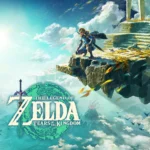











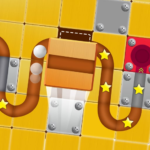
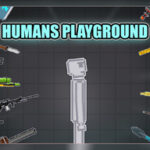

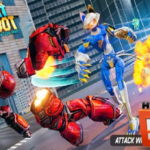

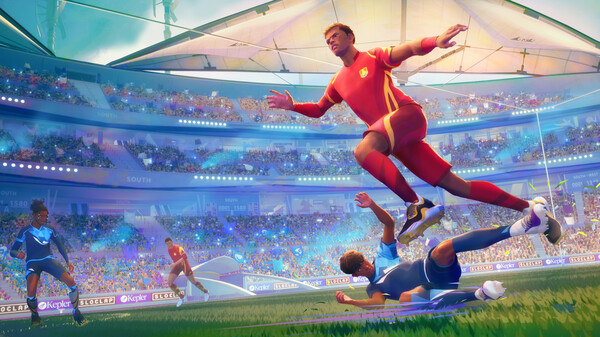
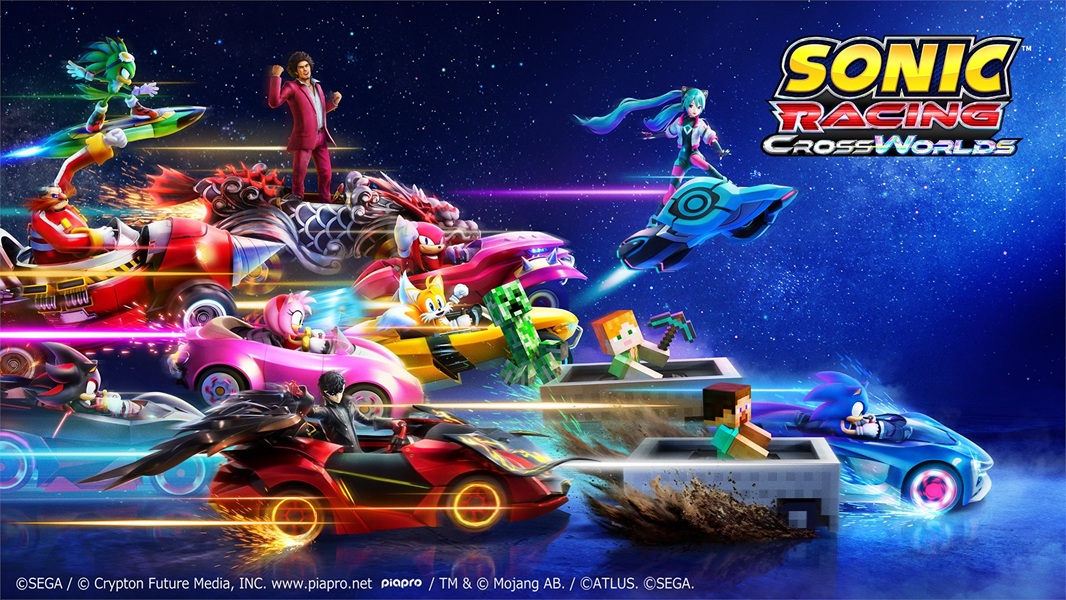


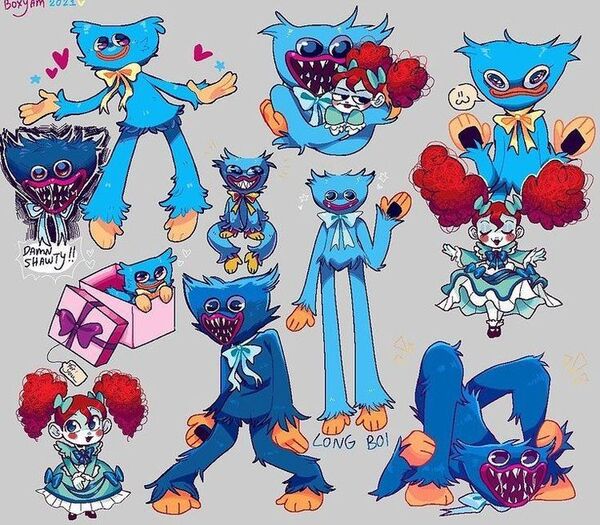




![Roblox – 99 Nights in the Forest 🔦 [FURNITURE]](https://lootjudge.com/wp-content/uploads/2025/07/logo-8-150x150.webp)

